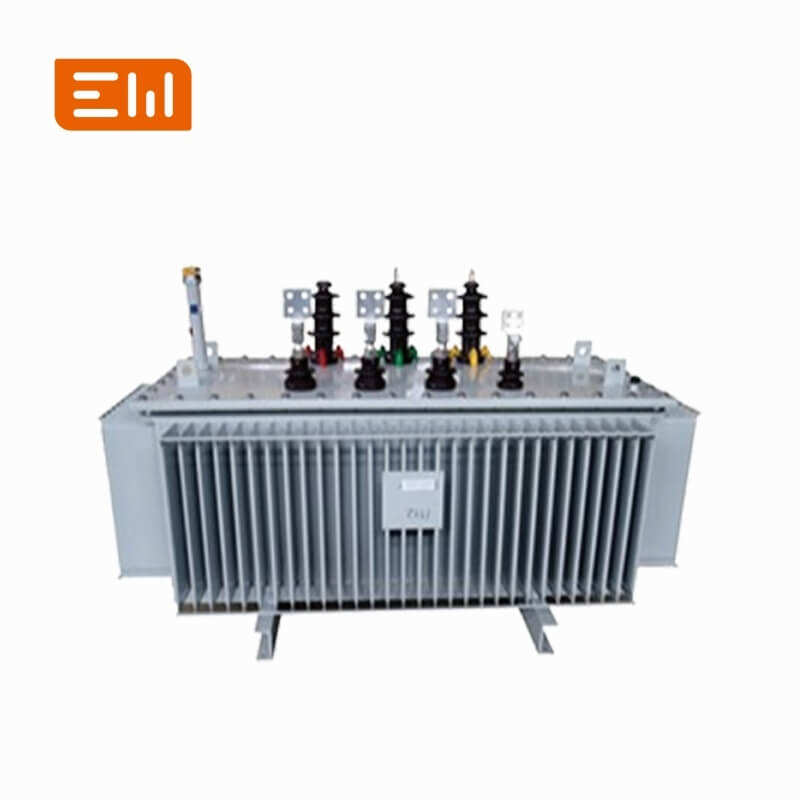Transformer Pole Solutions for Overhead Distribution Networks
Transformer pole installations remain the backbone of overhead distribution systems worldwide. Mounted high above ground, these transformers step down medium voltage to service levels, enabling reliable power delivery across rural communities, industrial parks, and suburban neighborhoods.
Quick Definition: A transformer pole refers to an overhead distribution transformer mounted on a utility pole, designed to convert medium-voltage feeder power to low-voltage service for end users.
Key Project Takeaways
- Pole-mounted transformers must comply with IEC 60076, IEEE C57.13.20, and local safety codes.
- Proper sizing, insulation, and lightning protection are critical to long-term performance.
- Enwei Electric supplies oil-immersed pole transformers with sealed tanks and customizable accessories.
- Deployment strategies vary across rural feeders, urban infill, and renewable interconnections.
Why Transformer Poles Remain Essential
Despite the growth of underground cables, transformer poles offer cost-effective distribution in areas where trenching is impractical. They allow utilities to extend grids quickly, support voltage regulation, and reduce installation time. Modern pole transformers incorporate sealed construction, corrosion-resistant coatings, and monitoring options to withstand harsh climates.
Electrification of remote sites, agriculture, and small industries relies on pole transformers that can be installed with minimal civil works. Utilities appreciate the straightforward maintenance access and scalability pole-mounted solutions provide.
Pole Transformer Fundamentals
Pole-mounted transformers are typically single-phase oil-immersed units rated from 10 kVA to 500 kVA. Their tanks feature mounting lugs for secure attachment, lifting hooks for handling, and terminals configured for overhead conductors. High-voltage bushings connect to primary feeders, while low-voltage bushings feed service drops.
Neutral grounding configurations depend on system design. Many transformers employ neutral bushings tied to ground wires, ensuring fault currents return safely. Accessories like bayonet fuses, lightning arresters, and wildlife guards enhance protection.
Standards and Safety References
- IEC 60076-1:2020 — General requirements for power transformers. Source: IEC
- IEEE C57.12.20-2017 — Standard for pad-mounted, compartmental-type distribution transformers, with guidance relevant to overhead units. Source: IEEE
- IEEE Std C2-2023 (National Electrical Safety Code) — Covers clearances, grounding, and safety practices for overhead installations. Source: IEEE
These references ensure transformer poles meet performance, insulation, and safety requirements mandated by utilities and regulators.
Design Comparison Table
| Design Factor | Engineering Considerations | Operational Impact |
|---|---|---|
| kVA Rating | Size for peak load plus 15 % margin, accounting for EV chargers or irrigation pumps | Prevents overloads during seasonal peaks. |
| Insulation Level | Select BIL level matching feeder voltage and lightning exposure | Reduces flashovers and outage frequency. |
| Cooling | Specify ONAN or ventilated designs; consider fin radiators in hot climates | Maintains oil temperature and prolongs insulation life. |
| Protection | Install primary cutouts, secondary surge arresters, and wildlife shields | Improves fault isolation and minimizes wildlife-related outages. |
| Monitoring | Add temperature sensors and IoT modules for remote status checks | Enables proactive maintenance and faster outage response. |
Deployment Scenarios
Rural feeders: Long spans and variable loads demand transformers with robust surge protection and adjustable taps to handle voltage drop.
Urban infill: Smaller pole transformers serve mixed-use developments, requiring compact profiles and aesthetic considerations.
Industrial loads: Light manufacturing sites rely on pole units with higher kVA ratings and reinforced bushings for vibration resistance.
Renewable projects: Community solar farms often use pole transformers for rapid interconnection to existing overhead lines.
Installation Considerations
Installing a transformer pole involves structural analysis of the utility pole, proper guying, and adherence to clearance requirements. Crews must de-energize lines, use insulated equipment, and secure the transformer with steel bands or brackets. Proper torque on primary and secondary connections and verified grounding ensure safe operation.
Utilities may prefabricate transformer/pole assemblies to reduce field labor. Recording serial numbers, GPS coordinates, and asset data supports future inspections.
Maintenance Strategy
Annual inspections should check oil leaks, corrosion, bushing condition, and hardware integrity. Infrared scanning identifies hotspots, while dissolved gas analysis detects internal faults in larger units. Vegetation management around poles reduces fire risk and improves access for crews.
Remote monitoring helps utilities prioritize maintenance, especially across wide service territories. Alerts for temperature rise or low oil level allow rapid intervention.
Engineer Checklist
- Determine load profile, power factor, and harmonic content for accurate sizing.
- Specify voltage class, vector group, and tap range aligned with feeder characteristics.
- Confirm pole rating, guying requirements, and clearance per safety codes.
- Include surge protection, wildlife guards, and secure fasteners in the bill of materials.
- Plan inspection intervals, oil sampling schedules, and spare transformer inventory.
Enwei Electric Pole Transformer Solutions
Enwei Electric manufactures oil-immersed distribution transformers suitable for pole mounting, featuring hermetically sealed tanks and customizable accessories. Review available models at https://www.enweielectric.com/products/transformers/oil-immersed-transformers. Complementary switchgear solutions at https://www.enweielectric.com/products/switchgear and prefabricated substations at https://www.enweielectric.com/products/substations support broader distribution upgrades.
Engineering FAQ on Transformer Poles
What is the lifespan of a pole-mounted transformer?
With proper maintenance, pole transformers typically operate for 25–35 years, depending on loading, environment, and lightning exposure.
How do utilities protect pole transformers from wildlife?
Install wildlife protectors, covered bushings, and insulating mats to prevent animals from bridging energized components.
Why choose Enwei Electric pole transformers?
Enwei Electric delivers high-efficiency oil-immersed designs with sealed tanks, robust coatings, and optional monitoring to support utility reliability goals.
Call to Action: Strengthen Overhead Networks with Enwei Electric
Reliable transformer pole installations keep communities powered. Partner with Enwei Electric for certified transformers, engineering support, and lifecycle services. Contact Enwei Electric today to specify pole-mounted solutions tailored to your distribution network.
Project Applications
See real-world deployment examples and gallery highlights across Enwei Electric product hubs:
- Transformer solutions for distribution and industrial projects.
- Switchgear portfolios covering medium- and low-voltage control rooms.
- Current transformer ranges supporting precision metering and protection.
- Prefabricated substations that integrate transformers, switchgear, and panels.
Table of Contents
- Transformer Pole Solutions for Overhead Distribution Networks
- Key Project Takeaways
- Why Transformer Poles Remain Essential
- Pole Transformer Fundamentals
- Standards and Safety References
- Design Comparison Table
- Deployment Scenarios
- Installation Considerations
- Maintenance Strategy
- Engineer Checklist
- Enwei Electric Pole Transformer Solutions
- Engineering FAQ on Transformer Poles
- Call to Action: Strengthen Overhead Networks with Enwei Electric
- Project Applications


